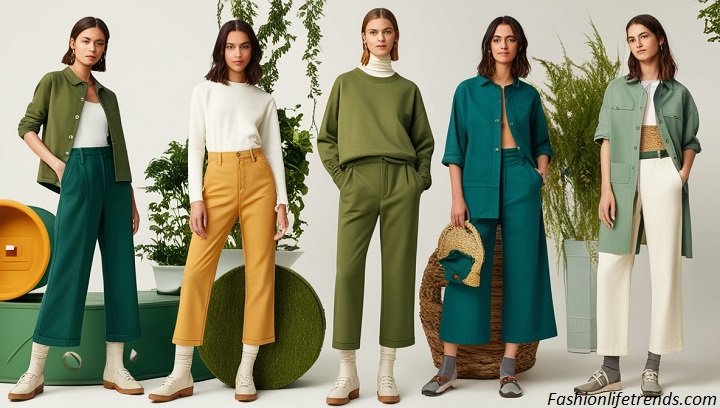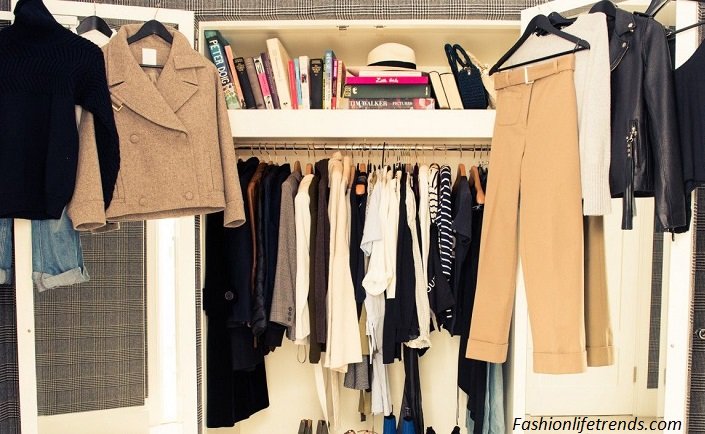Sustainable Fashion Trends In recent years, sustainable fashion has become more than just a buzzword—it’s a movement that’s reshaping the way we think about clothing and the environment. As concerns about climate change and the fashion industry’s environmental impact grow, more people are looking for ways to dress stylishly while reducing their ecological footprint. But what exactly does sustainable fashion mean, and how can we make better choices as consumers?
In this blog post, we’ll explore the concept of sustainable fashion, discuss the latest trends, and provide practical tips on how you can incorporate eco-friendly practices into your wardrobe. We’ll also share some high-authority resources to help you dive deeper into this topic.
Why Sustainable Fashion Matters of Sustainable Fashion Trends
The fashion industry is one of the largest polluters in the world. According to the United Nations, the fashion sector is responsible for 8-10% of global carbon emissions, more than international flights and shipping combined. Additionally, the industry uses an enormous amount of water and contributes to pollution through harmful chemicals, dyes, and synthetic fibers. Fast fashion—clothing made quickly and cheaply to meet consumer demand—worsens the problem by encouraging overconsumption and waste.
Sustainable fashion aims to address these issues by promoting practices that reduce harm to the environment, improve working conditions, and encourage mindful consumption. Let’s explore some of the key trends in sustainable fashion for 2024 and beyond.
Key Sustainable Fashion Trends for 2024
1. Circular Fashion
Circular fashion is one of the most talked-about trends in the sustainable fashion world. Unlike traditional fashion models, which operate on a linear system (make, use, dispose), circular fashion focuses on extending the life cycle of clothing. The goal is to create a system where clothing and materials are continually reused, repaired, and recycled, reducing the need for new resources and minimizing waste.
- Upcycling and Recycling: More brands are offering take-back programs where old clothes can be recycled into new garments or repurposed in creative ways. Upcycling, which involves turning old clothes into something new and trendy, is also gaining popularity.
- Resale and Second-hand Markets: Platforms like ThredUp and Depop are thriving, making it easier for consumers to buy and sell second-hand clothing. This not only keeps clothes out of landfills but also gives them a second life in someone else’s wardrobe.
2. Sustainable Fabrics of Sustainable Fashion Trends
The type of fabric used in clothing has a huge impact on the environment. Sustainable fabrics are becoming more mainstream as consumers demand better choices and brands look to reduce their environmental footprint.
- Organic Cotton: Traditional cotton farming is water-intensive and relies on pesticides. Organic cotton, grown without harmful chemicals and with less water, is a more eco-friendly alternative.
- Bamboo and Hemp: These fast-growing plants require little water and no pesticides. Bamboo, in particular, has become popular for its soft texture and natural antibacterial properties.
- Recycled Materials: Fabrics made from recycled materials, such as plastic bottles or old textiles, are becoming more common. Brands like Patagonia are leading the charge by creating jackets and other apparel from recycled polyester.
3. Ethical and Transparent Supply Chains
Consumers are increasingly demanding transparency from brands about how and where their clothes are made. Ethical fashion focuses on improving the working conditions of the people who make our clothes, ensuring fair wages, safe working environments, and humane treatment.
- Fair Trade: Fair Trade-certified brands guarantee that workers are paid fairly and work in safe conditions. Supporting Fair Trade products is one way consumers can make a positive impact.
- Supply Chain Transparency: More brands are becoming transparent about their supply chains, from sourcing materials to manufacturing. Patagonia and Everlane are examples of brands that openly share details about their production processes and environmental efforts.
4. Slow Fashion Movement
Slow fashion is the opposite of fast fashion. It encourages consumers to invest in high-quality, timeless pieces that are made to last, rather than buying cheap, trendy items that quickly go out of style. The slow fashion movement promotes thoughtful consumption, encouraging consumers to buy less but buy better.
- Capsule Wardrobes: A capsule wardrobe consists of a small collection of versatile, timeless clothing items that can be mixed and matched. The idea is to focus on quality over quantity, reducing the need for constant shopping.
- Durability and Longevity: More brands are focusing on creating durable clothing that stands the test of time, reducing the need for frequent replacements. Companies like Levi’s offer repair services to help extend the life of their products.
How to Make Your Wardrobe More Sustainable
Now that we’ve covered some of the major sustainable fashion trends, you might be wondering how you can make your own wardrobe more eco-friendly. Here are a few practical tips to help you get started:
1. Choose Quality Over Quantity
When shopping for clothes, prioritize quality over quantity. Look for well-made pieces that will last longer, even if they’re a bit more expensive upfront. By investing in timeless staples, you’ll save money in the long run and reduce waste.
2. Shop Second-hand or Vintage
Buying second-hand or vintage clothing is one of the best ways to reduce your environmental impact. You’ll be giving pre-loved clothes a new life, and you may even find unique pieces that you wouldn’t find in mainstream stores. Thrift stores, online resale platforms, and vintage shops are great places to start.
3. Look for Sustainable Fabrics
When shopping for new clothes, opt for items made from sustainable fabrics like organic cotton, bamboo, hemp, or recycled materials. These fabrics are less harmful to the environment and often have better durability and comfort.
4. Repair and Repurpose Your Clothes
Instead of throwing away clothes that are damaged or no longer fit, consider repairing or repurposing them. Learning basic sewing skills can help you fix minor tears or adjust the fit of a garment. You can also get creative with upcycling, turning old clothes into something new and unique.
5. Support Sustainable Brands
Do your research and support brands that prioritize sustainability and ethical practices. Look for companies that are transparent about their supply chains, use sustainable materials, and pay fair wages to workers.
Conclusion
Sustainable fashion is not just a trend; it’s a movement that’s here to stay. As consumers, we have the power to make choices that reduce our impact on the environment and promote ethical practices within the fashion industry. By embracing circular fashion, choosing sustainable fabrics, supporting ethical brands, and being mindful about what we buy, we can all play a part in making fashion more sustainable.
It’s important to remember that sustainability is a journey. You don’t have to overhaul your wardrobe overnight. Small changes—like shopping second-hand, repairing clothes, or choosing quality over quantity—can make a big difference over time.
For more resources on how to live sustainably and make informed fashion choices, check out the Ellen MacArthur Foundation, which focuses on promoting the circular economy and sustainable practices across various industries, including fashion.




